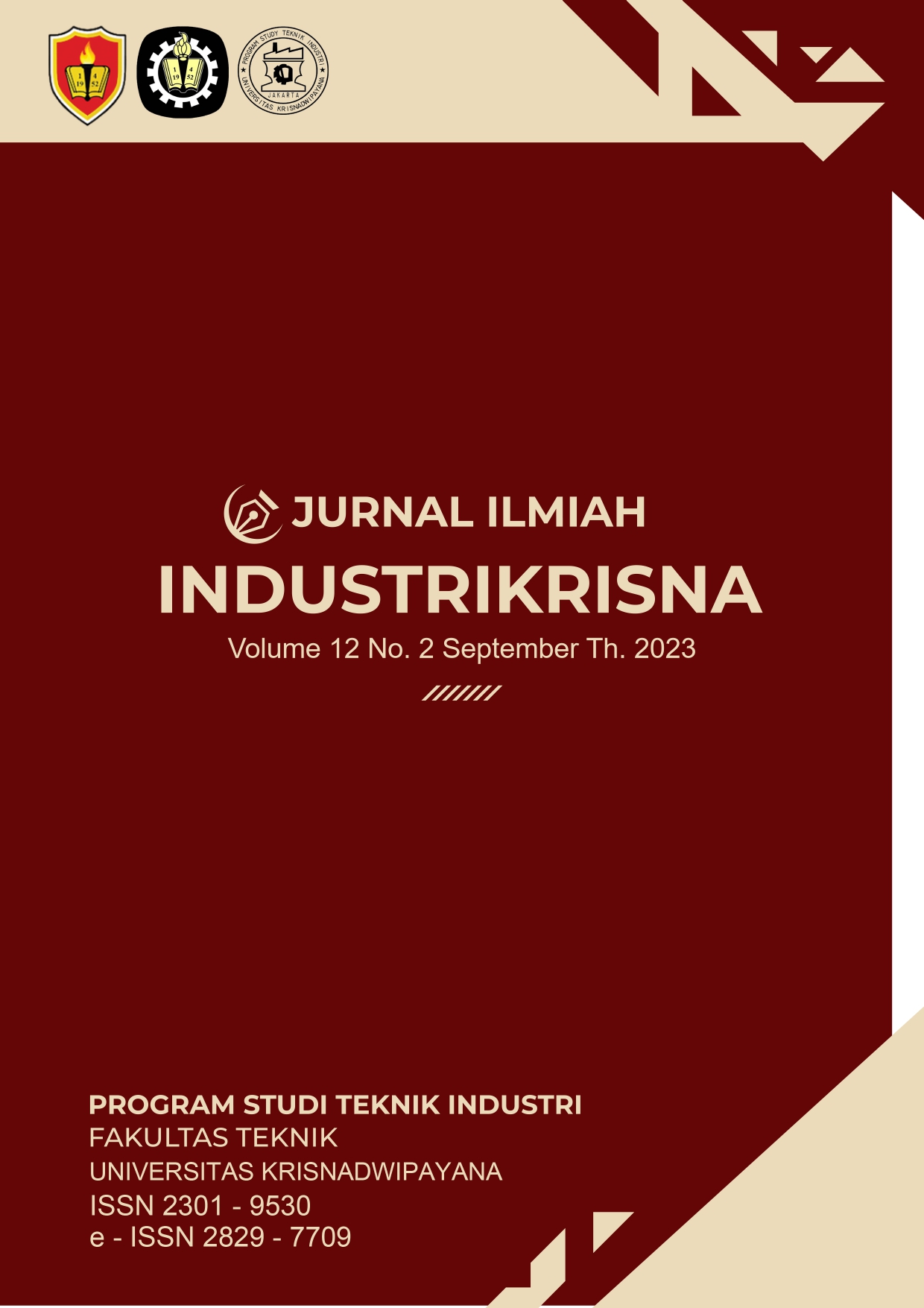MENURUNKAN REJECT OVERLAP INNERSEASONING OIL MIE GORENG DENGAN METODE FAULT TREE ANALYSIS (FTA) DAN FAILURE MODE AND EFFECT ANALYSIS (FMEA) DI PT. TRIMITRA INDOPLAST MANDIRI
DOI:
https://doi.org/10.61488/industrikrisna.v12i2.433Kata Kunci:
FTA, FMEA, Quality, PokaokeAbstrak
PT. Trimitra Indoplast Mandiri is a flexible packaging manufacturing company that provides
packaging printing services based on LDPE, LLDPE, PET and Nylon. PT Trimitra Indoplast
Mandiri, especially in the dry and printing line, the quality control section has problems where
there are still a variety of dry & printed products that do not comply with quality standards
such as types of defects, number of defects, and causative factors. Therefore, it is necessary to
overcome these defective products. Quality improvement was carried out in this study using the
fault tree analysis and failure mode and effect analysis methods to determine the root causes of
product defects which would later reduce the defect rate according to the target defects in the
dry & printing line by 2%. From the results of the data calculation, it was found that the inner
seasoning oil for fried noodles had a total defect of 2449 pcs. Based on the pareto diagram that
has been made of 4 types of product defects, the largest type of defect is found in overlapping
defects with a proportion of 70% with a total of 1709 pieces of product. Based on the fault tree
analysis, the most influential causal factor is the method factor. Furthermore, the failure mode
analysis and the effect of the largest RPN values are 320 and 245, namely the material will shift
far away not according to the design and produce wrong printing results. And after making
improvements in the form of pokayoke design on the bearing guide roll and as shaft unwinder,
it turned out that it was able to reduce the reject results in the products produced. As well as
succeeding in reducing the reject rate of inner seasoning oil for fried noodles according to
company standards by 2%, from which initially there was a proportion of rejects obtained by
5% to 1.96%.
Unduhan
Diterbitkan
Terbitan
Bagian
Lisensi
Hak Cipta (c) 2023 Ismail Kurnia

Artikel ini berlisensi Creative Commons Attribution 4.0 International License.






